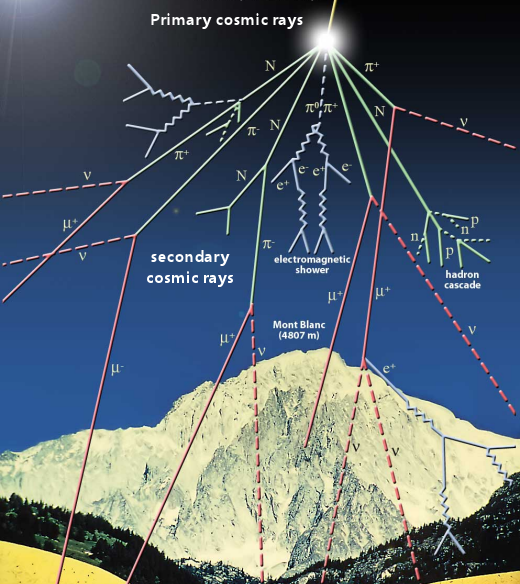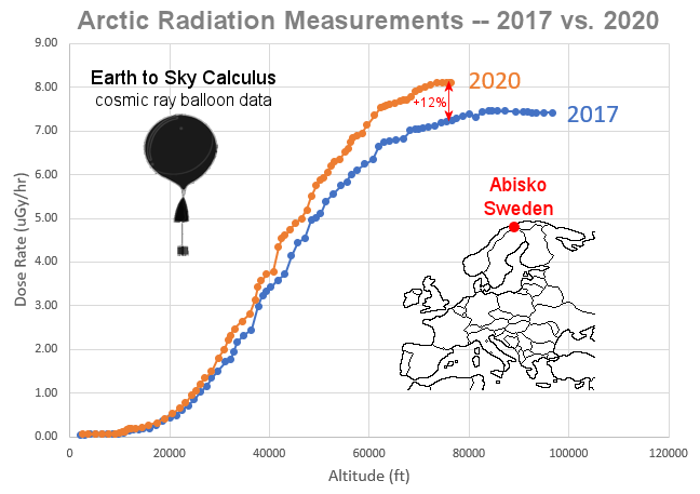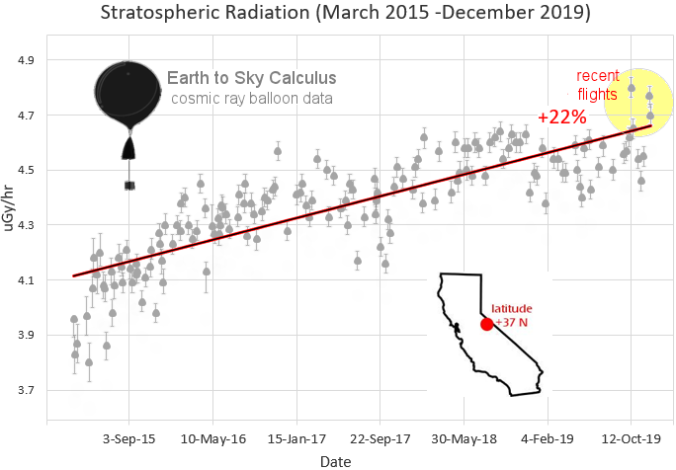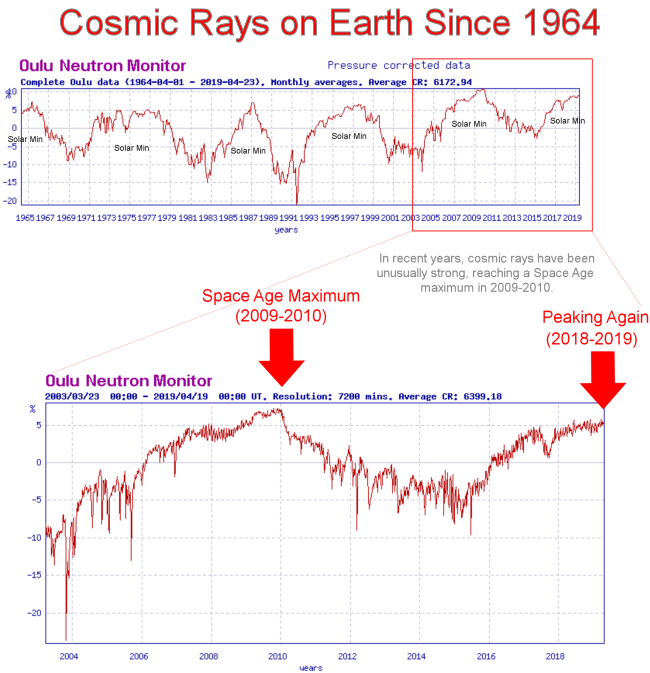Something ironic is happening in Earth's atmosphere. Solar activity is low-very low. Yet atmospheric radiation is heading in the opposite direction. Cosmic rays percolating through the air around us are at a 5 year high.
Comment: It's not 'ironic'! Geez, talk about anthropocentric projection.
It's what one would expect, provided one has a correct understanding of astrophysics, which takes into account elements of Electric Universe theory. The Sun normally buffers cosmic rays from penetrating the Earth's atmosphere, as it does all planets in our solar system, because the heliosphere (the sheath or 'bubble' around the system caused by the solar wind) keeps them out. But because it's so quiet the solar wind has weakened to allow more cosmic rays 'through' into our system. In parallel, and to a smaller extent, the weakened solar wind weakens Earth's magnetic shield, again allowing more cosmic rays than 'normal' to penetrate to the lower atmosphere.
Take a look at these data gathered by cosmic ray balloons launched by Spaceweather.com and the students of Earth to Sky Calculus almost weekly since March 2015.
Radiation levels have been increasing almost non-stop since the monitoring program began, with recent flights registering the highest levels of all.
What's happening? The answer is "Solar Minimum"-the low point of the 11-year solar cycle. During Solar Minimum (underway now) the sun's magnetic field weakens and allows energetic particles from deep space to penetrate the Solar System. As solar activity goes down, cosmic rays go up; yin-yang.
Comment: Yes, although cosmic ray flux was unusually high during the last 'solar maximum' too.
When cosmic rays hit the top of Earth's atmosphere, they produce a spray of secondary particles and photons that rain down on Earth's surface. This is what our balloons measure-the secondary spray. We use X-ray and gamma-ray detectors sensitive to energies in the range 10 keV to 20 MeV. This type of radiation, which you can also find in medical X-ray machines and airport security scanners, has increased more than 20% in the stratosphere.
Another way to measure cosmic rays is using a neutron monitor. Neutrons are an important type of secondary cosmic ray. They reach Earth's surface with relative ease and are biologically effective. Neutron monitors at the Sodankyla Geophysical Observatory in Oulu, Finland, are getting results similar to ours. Oulu data show that cosmic rays have been increasing for the past 5 years and, moreover, are within percentage points of the Space Age record.
Secondary cosmic rays are what we measure. Radiation sensors onboard our helium balloons detect X-rays and gamma-rays in the energy range 10 keV to 20 MeV, similar to what you get from medical X-ray machines and airport security scanners.

Who cares? Anyone who steps on an airplane. Cosmic rays penetrate commercial jets, delivering whole-body dosages equal to one or more dental X-rays even on regular flights across the USA. Cosmic rays pose an even greater hazard to astronauts, of course. Cosmic rays can also alter the electro-chemistry of Earth's upper atmosphere and are thought to play some role in sparking lightning.
Stay tuned for updates.






[Link]
Read more, learn more.